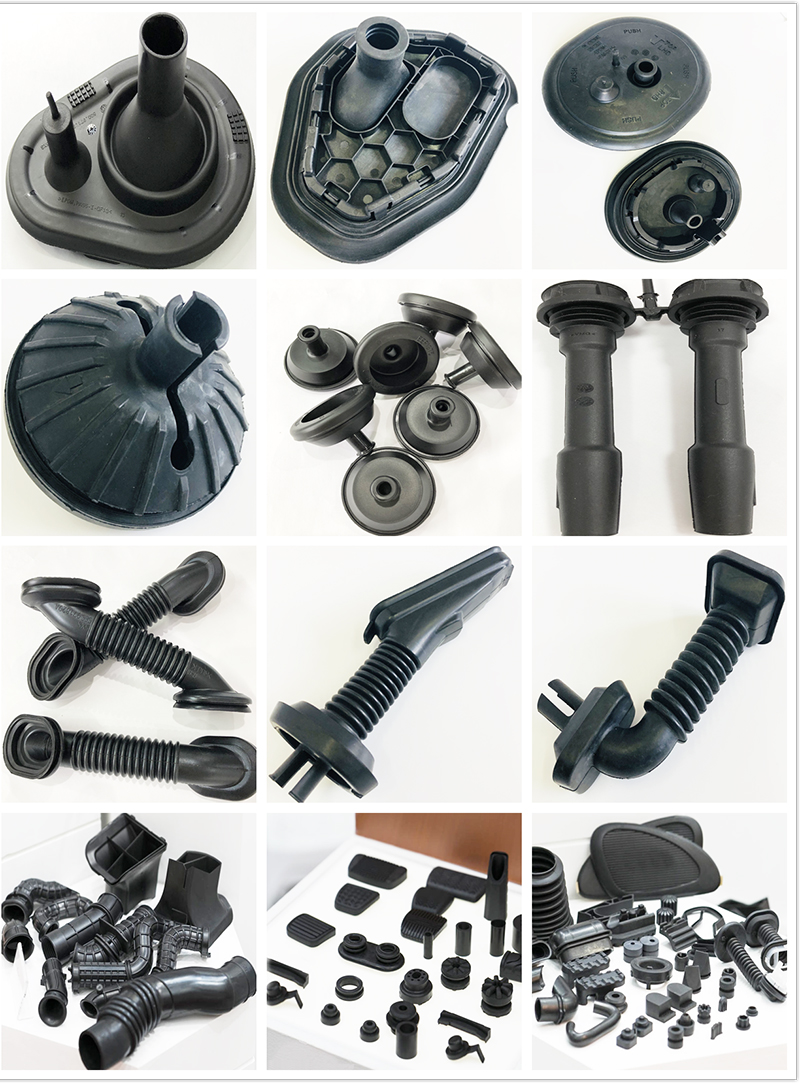

Types of Rubber Used for Rubber Molding
There is a very long and ever growing list of the different types of rubber that is used for rubber molding. There is a wide variation in the types of rubber used for the rubber molding process, the majority of which are synthetic and formed by a chemical process involving polymers, which enhance the durability and elasticity for the forming and shaping process.
To develop a complete understanding of the materials used in the rubber manufacturing process, it is important to know the difference between natural rubber and synthetic rubber. Natural rubber comes from the rubber tree plant from which latex is taken that is used to produce rubber.
Synthetic rubber is made artificially by the polymerization of monomers into polymers. The process can be done by solution or emulsion polymerization. The solution method involves dissolving the monomer on a solvent that contains a catalyst with the resulting effect being a polymer. The emulsion process uses an emulsion that contains water, a monomer, and surfactant, a compound that lowers surface tension.
Types of Rubber Used for Rubber Molding
Natural Rubber
Natural rubber comes from the latex produced by the rubber tree. It has high tensile strength with abrasion and surface friction properties, which makes it ideal material for vibration dampers, seals, o-rings, mountings, diaphragms, and bumpers. Since natural rubber bonds well with metal, it can be used as a coating.
Nitrile or Buna-N (NBR)
Nitrile rubber is made from acrylonitrile and butadiene. It is made using the emulsifier process where acrylonitrile, a butadiene monomer, an activator, and catalyst are mixed in a polymerization container. For the various compounds to mix, the container has to be heated to 40° C. NBR is the most used of the synthetic rubbers in the rubber molding process due to its resistance to water, oil, various fluids, and solvents. It is resistant to abrasion and tearing and has excellent mechanical properties.
Hydrogenated Nitrile Butadiene (HNBR)
HNBR is produced by the hydrogenation of NBR, which removes the olefinic that are vulnerable to degradation. It is known for its strength and resistance to heat. HNBR rubber compounds are resistant to petroleum based oils and fuels, aliphatic hydrocarbons, vegetable oils, silicone oils and greases, ethylene glycol, water and steam, dilute acids, bases, and salt solutions. It is extensively used in the auto industry.
Ethylene Propylene Diene Monomer (EPDM)
EPDM is made from combining ethylene, propylene, and a diene comonomer that allows for crosslinking. The structure of EPDM makes it resistant to heat, light, and ozone as well as capable of withstanding temperatures up to 150° C. EPDM is highly durable and lasts in an application for a long time. It is used for steam systems, panels on cars and trucks, and braking systems.
Silicone
Silicone rubber is a rubber like material composed of silicon combined with carbon, hydrogen, and oxygen. The term silicone rubber covers several types of silicone rubbers that are differentiated by their organic grouping and chemical structure. The different types include methyl, methyl phenyl, methyl vinyl, methyl phenyl vinyl, and fluoro vinyl methyl. Silicone rubber is widely used for its resistance to extreme temperature variations, flexibility, and weather resistance.
Fluorosilicone (FVMQ)
Fluorosilicone is one of the variations of silicone that contains trifluoropropyl, which enhances its resistance to chemicals, non-polar solvents, fuels, oils, acids, and alkaline. Like silicone, it is highly adaptable across a wide range of temperatures. It is this final quality that has made it extensively used in the aerospace industry as well as its longevity and resistance to petroleum products.
Neoprene
Neoprene rubber, which is also known as polychloroprene or chloroprene, is produced by the emulsion polymerization of chloroprene using a potassium catalyst. It is a multipurpose material that has weather, temperature, fire, and abrasion resistance properties. Since neoprene resists degradation, it is used for gaskets, hoses, and various forms of coating. The versatility of neoprene makes it ideal for use in rubber molding regardless of the type of molding being used.
Styrene Butadiene (SBR)
SBR rubber is produced from mostly butadiene with a small percentage of styrene, which are copolymerized using the emulsion process. It has exceptional abrasion, crack, and aging resistance. The many positive characteristics of SBR has made it ideal for rubber molding of diaphragms, seals, and gaskets.
Fluorocarbon (FKM)
FKM is made from VITON or fluororubber and are classified by their chemical composition, fluorine content, or method of cross linking. The classification of FKMs goes from one to five with each type having a different type of copolymer. There are three types of crosslinking materials for FKMs, which are diamine, dihydroxy, and peroxide. The characteristics of FKM makes it resistant to chemicals and extreme high temperatures making it ideal for the molding of hoses, O-rings, gaskets, and fuel lines.
Butyl or Isobutylene Isoprene (IIR)
IIR rubber is made by copolymerizing isobutylene with isoprene, which are two compounds that come from natural gas or crude oil. To combine the two materials, they are cooled to -100° C or -150° F. IIR is not permeable by gas, which makes it ideal for the production of seals for high pressure and vacuum applications. Additionally, it has sound dampening qualities to use as a bumper for equipment.
Urethane
Urethane or polyurethane is made by reacting polyol with a diisocyanate or polymeric isocyanate after being placed with a catalyst. Since there are several different types of polyols and diisocyanates, there are several different types of urethane rubber materials that can be made from the different combinations of the compounds. Urethane rubber is used in applications where there is a need for materials that can withstand abrasion and has excellent tensile strength.
